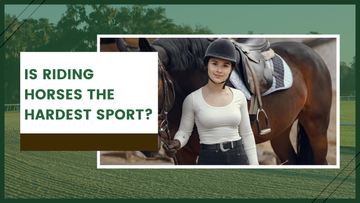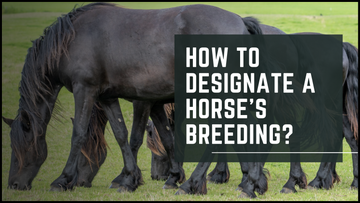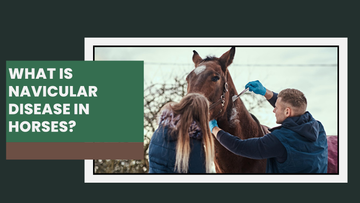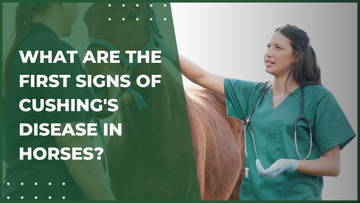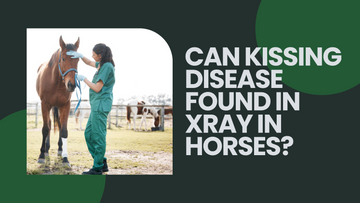Riding horses isn’t as easy as it looks. It’s not just about sitting on a horse and letting it do the work. You need balance, control, and quick thinking. So when people ask, is riding horses the hardest sport? The answer isn't always so simple. Many don’t realize just how much strength and skill it takes.
Horses in sports are strong and fast, and riders have to work with them, not just on them. From controlling the horse’s every movement to maintaining calm, horseback riding demands a unique set of skills.
So, is it the hardest sport? Let’s take a closer look and find out!
Why Horse Riding Is A Sport?
The Horseback riding sport requires strength, balance, and skill. Riders must develop core stability, strong muscles, and quick reflexes to control the horse. Unlike other sports, horseback riding as a sport involves teamwork with a powerful animal.
Many wonder, is riding a horse a sport? The answer is yes, as it demands athleticism and discipline. Events like dressage, show jumping, and eventing showcase the skill and training required. The fact that the horseback riding sport has been in the Olympics since 1912 proves its legitimacy.
Beyond competition, horseback riding as a sport improves muscle tone, posture, and balance. It also improves focus, patience, and confidence, benefiting both body and mind. The combination of athleticism and strategy makes horseback riding sport truly unique sport.
The Physical Demands of Riding Horse: Is It More Than You Think?
Horseback riding is often underestimated in terms of its physical demands. However, it requires a unique combination of strength, balance, and coordination. Here's a breakdown of the physical aspects involved.

1. Leg Strength: Riders use their legs to communicate with the horse, requiring strong thigh and calf muscles.
2. Heart Rate Elevation: Studies have shown that experienced riders can elevate their heart rate to at least 60% of their maximal aerobic power during activities like trot and canter, indicating a moderate cardiovascular demand.
3. Joint Mobility: Riders need flexibility in the hips, knees, and ankles to adapt to the horse's movements.
4. Hand-Eye Coordination: Effective communication with the horse requires precise timing and coordination.
5. Stress Management: Managing the horse's behavior and responding to unexpected situations requires mental resilience.
How Horseback Riding Challenges the Mind?
Horseback riding is more than just a physical activity, it profoundly engages the mind, offering numerous cognitive and emotional benefits.
Here's how it challenges and improves mental well-being.
-
Mental Coordination: Riders must coordinate their movements with the horse, requiring focus and mental agility to maintain balance and control.
-
Trust and Vulnerability: Building a relationship with a horse involves trust and vulnerability, as the rider must rely on the horse's instincts and cooperation.
-
Problem Solving: Riders often encounter obstacles and must quickly think of solutions to navigate them safely and effectively.
-
Attention to Detail: Paying close attention to the horse's behavior and body language is crucial for understanding its needs and responding appropriately.
-
Mindfulness: Being present in the moment and aware of the surroundings helps riders stay attuned to the horse and the environment.
-
Emotional Regulation: Managing emotions and stress during rides is important for maintaining a calm and effective partnership with the horse.
-
Decision Making: Riders must make split-second decisions that can affect the safety and success of the ride.
-
Physical and Mental Stamina: Maintaining concentration and physical effort throughout a ride tests both mental and physical endurance.
How Long Does It Take to Master Horse Riding?
Becoming skilled in horseback riding is a personal journey that can differ significantly from one person to another, shaped by elements like innate talent, existing experience, and the regularity of practice.
For those who commit to frequent lessons and steady practice, reaching a proficient riding level may require around two years.
Essential Elements Affecting Learning Time:
-
Practice Frequency: Participating in lessons weekly offers roughly 40 hours of riding experience per year. Boosting the frequency of practice can speed up the learning process.
-
Instructor Expertise: Receiving instruction from knowledgeable teachers can greatly improve the learning experience by offering essential feedback and guidance.
-
Individual Dedication: The more time and effort you put into practice and learning, the faster you will advance.
-
Horse Suitability: Riding a horse that aligns with your skill level can enhance the efficiency and enjoyment of the learning experience.
Developmental Milestones:
1) First Six Months: Concentrate on acquiring fundamental abilities such as mounting, steering, and controlling the horse at a walk and trot.
2) One Year: Gain proficiency in basic riding techniques and start to grasp horse behavior and communication.
3) Two Years: Build a strong foundation in riding skills, including cantering, jumping, and understanding advanced tricks.
Essential Gear for Horseback Riding: What You Need to Compete
Participating in horseback riding as a sport involves more than mere enthusiasm; it demands suitable equipment to guarantee safety, comfort, and peak performance.
Regardless of whether you are an experienced rider or a beginner, possessing the right gear is essential. Below is a summary of the key items you will require:

1. Helmets: Prioritizing safety is essential! A properly fitted helmet shields riders from severe injuries during falls.
2. Saddles: Selecting the appropriate saddle guarantees comfort for both the rider and the horse, which directly influences riding performance.
3. Stirrups: Sturdy stirrups offer stability, aiding riders in maintaining balance across various disciplines.
4. Bridles: A well-fitted bridle improves communication and control, leading to better coordination with the horse.
5. Gloves: Riding gloves improve grip and protect your hands from blisters and calluses. They also provide additional protection in case of a fall.
6. First Aid Kit: Accidents can happen, so having a first aid kit on hand is essential. It should include items like bandages, antiseptic, and other basic medical supplies.
Is horse riding the hardest sport? Comparing Horseback Riding with Other Elite Sports
Horseback riding is often celebrated for its unique blend of physical and mental challenges. But how does it compare to other elite sports?
Let's explore the complexities of horseback riding as a sport and see how it stacks up against other athletic endeavors.
Physical Demands
-
Teamwork with the Horse: Unlike many sports, horseback riding involves a partnership with a powerful animal, requiring synchronization and mutual trust.
-
Diverse Events: Disciplines like dressage, show jumping, and eventing showcase the skill and training required.
-
Olympic Recognition: The inclusion of horseback riding in the Olympics since 1912 underscores its legitimacy and the athleticism involved.
-
Comprehensive Fitness: Beyond competition, horseback riding improves muscle tone, posture, and balance, benefiting both body and mind.
Mental Challenges
-
Emotional Bond: Riders must build a strong bond with their horses to achieve success, setting horseback riding apart from many other athletic endeavors.
-
Focus and Patience: Engaging in horseback riding requires not only physical strength but also mental fortitude.
Risk Factors
-
Inherent Risks: Horseback riding is considered one of the more dangerous sports, with a higher risk of injury compared to activities like swimming or golf.
-
Safety Measures: The combination of a powerful animal and the potential for unexpected situations contributes to the inherent risks involved.
Comparative Analysis
-
Unique Combination: Horseback riding uniquely combines physical skill, mental acuity, and a partnership with an animal, making it distinct in its own right.
-
Diverse Challenges: While other sports like gymnastics and ballet require exceptional flexibility and strength, and football demands high levels of cardiovascular fitness and strategic thinking, horseback riding offers a different set of challenges.
Final Thoughts
Horseback riding demands not only physical strength and balance but also mental focus and emotional connection with the horse. It challenges riders in ways many other sports don't, requiring quick decision-making, control, and perseverance.
While it may not be the hardest sport for everyone, its unique combination of skills and the deep bond between rider and horse make it one of the most rewarding and demanding activities out there.
Explore top-quality equine products and learn more fascinating horse facts at The Epic Animal. Visit us now for all your equestrian needs!
FAQs:
-
Is horse riding a dangerous sport?
Yes, horse riding is a dangerous sport that can lead to traumatic brain injuries, from falls can result in concussions, broken bones, and head or spine injuries.
-
What is the weight limit for horse riding?
The weight limit for horse riding is commonly considered to be 20% of the horse's weight, including the rider, saddle, and gear.
-
Is horse riding good exercise?
Yes, horseback riding is known as a good form of exercise. It provides a variety of physical and mental health benefits such as cardiovascular health, coordination, balance, and others.
-
How long does it take to learn horse riding?
It can take about two years to learn the basics of horse riding. However, the time it takes to learn depends on many factors.
-
What age can you start riding a horse?
The age at which you can start riding a horse depends on your maturity level, interest, and safety.
Read More Blogs:

What Is the Biggest Horse Breed? Let’s Find Out

